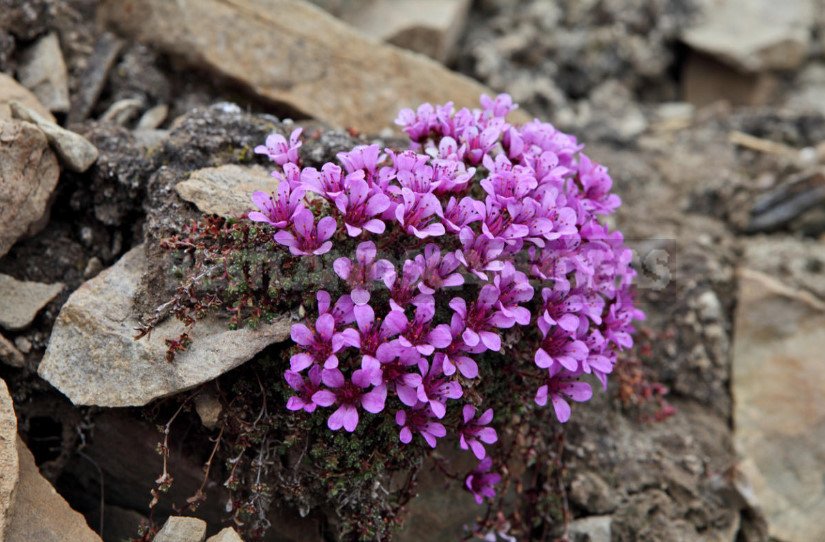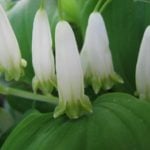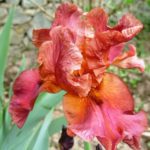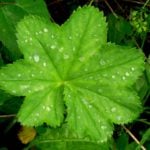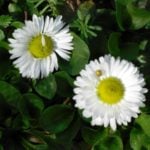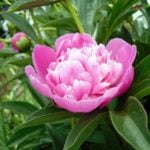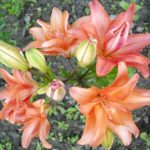High in the mountains among rocks, in narrow crevices and cracks of stones tiny bushes of plants make their way to the light. Some of them like small lumps of bright green moss, others resemble Sedum or Sempervivum.
But from the dense mass of leaves begin to rise shoots, at the ends of which are visible buds. When they are revealed, everything is transformed: from green or bluish it becomes purple-pink, sometimes white or yellow. So bloom saxifrage.
Extensive genus of saxifragaceae belongs to the Saxifragaceae family and has different sources from 370 to 440 species. They are distributed mainly in the Northern hemisphere, some representatives are found in Africa — in the highlands of tropical countries.
This unusual name of the plant received from the Latin words saxum-rock and fragere-break, and it says about the extraordinary ability of saxum to survive in the most remote corners, among the stones, in the crevices of the rocks.
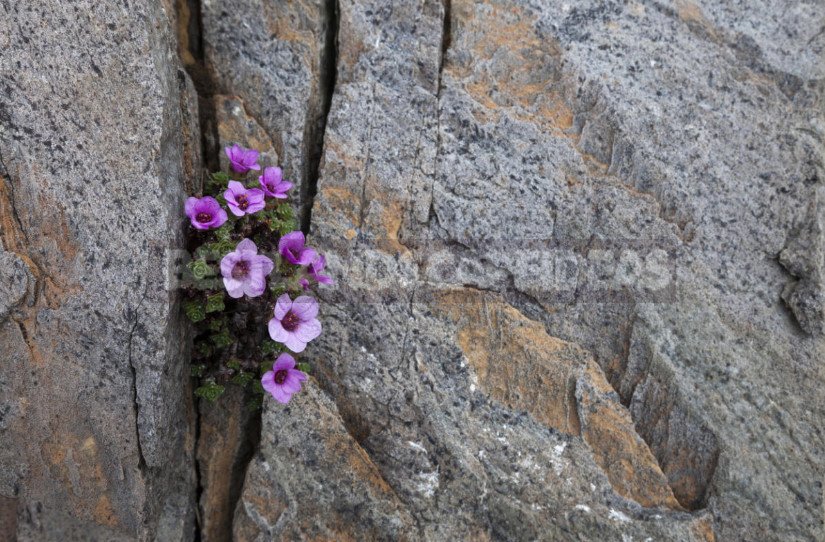
Botanical description
Almost all members of the genus – herbaceous perennials, whose height varies from 5 to 70 cm have rhizomes and basal rosettes of leaves, grow to the sides.
Depending on the species there are leaves of different shapes (oval, cordate, pinnate, diamond), they are smooth leathery, pubescent, painted in dark green or gray, bluish, silvery shades. On the surface of the plant can often be seen grayish limescale, which they emit.
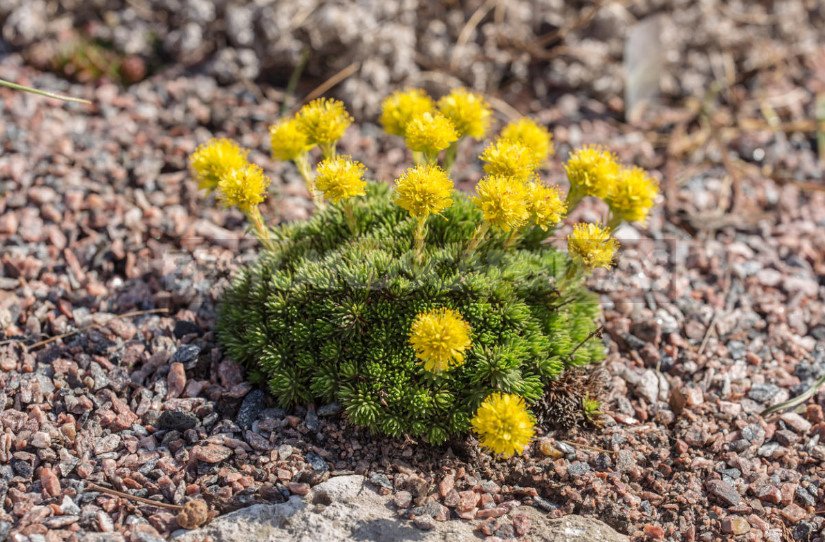
Flowers are medium-sized, five-petal, have the correct star shape. There are single, but often collected in small inflorescences in the form of panicles, the color depends on the variety (white, pink, yellow). Flowering is usually long.
Saxifraga x arendsii
Saxifraga x arendsii-the most common type of gardeners. Rather, it is an interspecific hybrid belonging to the group of mossy saxifrage. Very nice plant 10-20 cm in height, forms a semicircular bright green pads. Blooms in late spring-early summer.
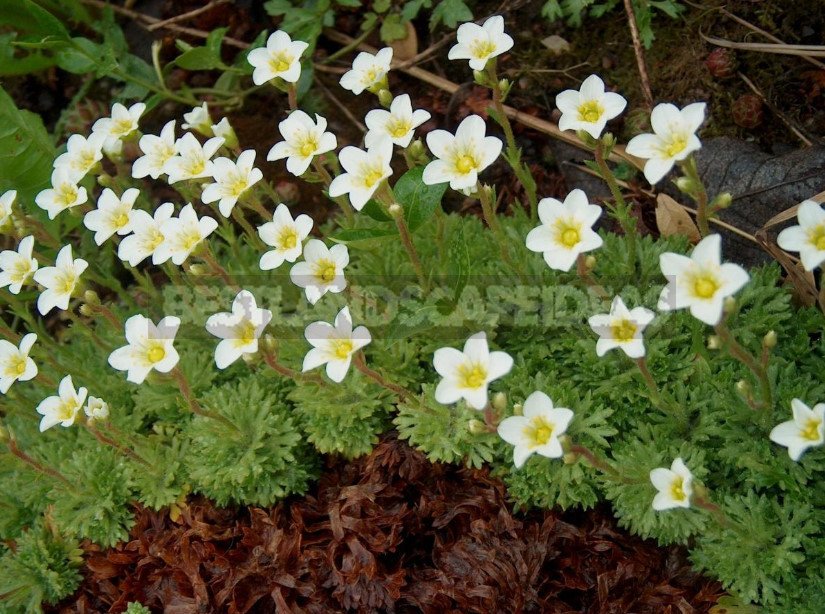
During flowering with pink or white flowers on tall stalks. Winter-hardy and unpretentious look, quickly grows under good conditions. Does not like drying out. In case of excessive humidity, partial evaporation may occur.
In the form of care undemanding, the main thing is to prevent drying of plants. Grown in the open, but acceptable and partial shade. Soil prefers loose, moist. Transplanting and rejuvenate plants should not be more than once every 4-5 years.
Interesting varieties:
- ‘Purpurmantel’. Flowers purple-pink color, plant height not more than 20 cm.
- ‘Blutenteppich’ has bright red flowers, plant undersized-up to 15 cm in height.
- ‘Schneeteppich’ – with white flowers, grows up to 20 cm.
- ‘Flamingo’ – pink flowers of an unusual shade, height 15-20 cm.
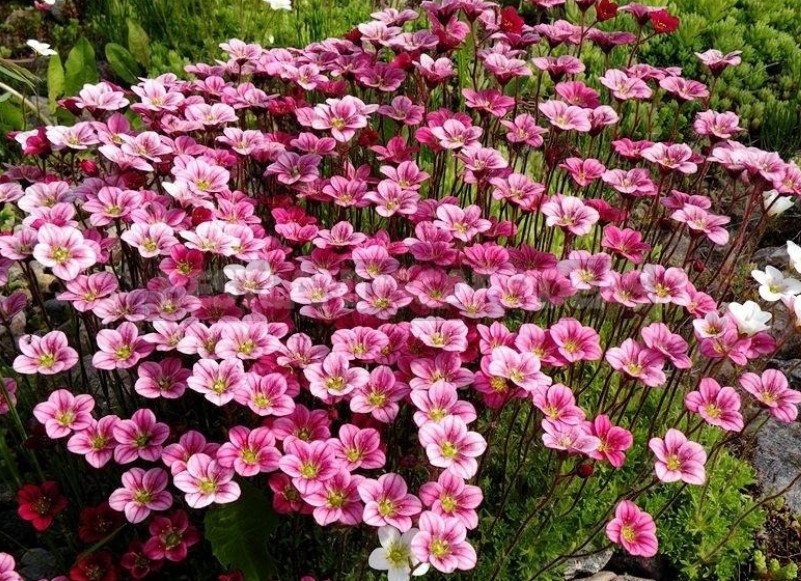
Saxifraga trifurcata
Saxifraga trifurcata forms a cushion only 5-7 cm tall. The carved leaves are light green, thick and juicy, at the end of the claw, stalks crimson. During flowering sparkle tall brown stems, the ends of which five petal bloom white flowers.

Saxifraga paniculata
Saxifraga paniculata or Saxifraga aizoon is somewhat similar to Sempervivum, thanks to the bluish leaves covered on the edge with white teeth of lime plaque. Forms a very beautiful rosettes only 5-6 cm in diameter, flowering occurs in June-July.
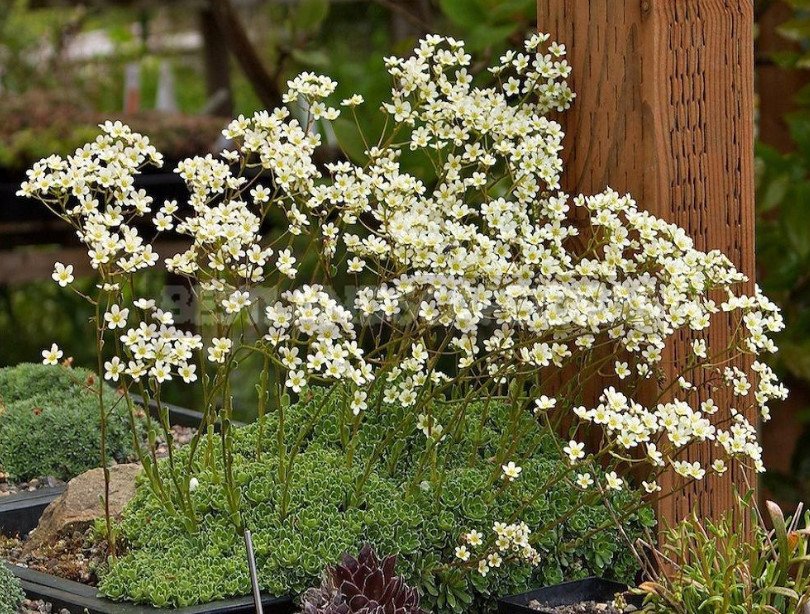
Class, the most interesting gardeners:
- ‘Macocha’. Leaf rosettes up to 15 cm in diameter, white flowers with a yellow middle, located on long (up to 50 cm) peduncles. Flowering time is from may to July.
- ‘Balcana minima’ – an interesting and quite rare collector’s grade. Plants form low pillows with tiny rosettes (1-2 cm in diameter).
Saxifraga umbrosa
Saxifraga umbrosa, other name Saxifraga x urbium. Named so for the ability to grow in shaded areas. Forms a solid carpet no higher than 10-15 cm. The evergreen leaves are shovel-shaped form on the edge of the teeth have been interesting variegated forms. Blooms in may-June.
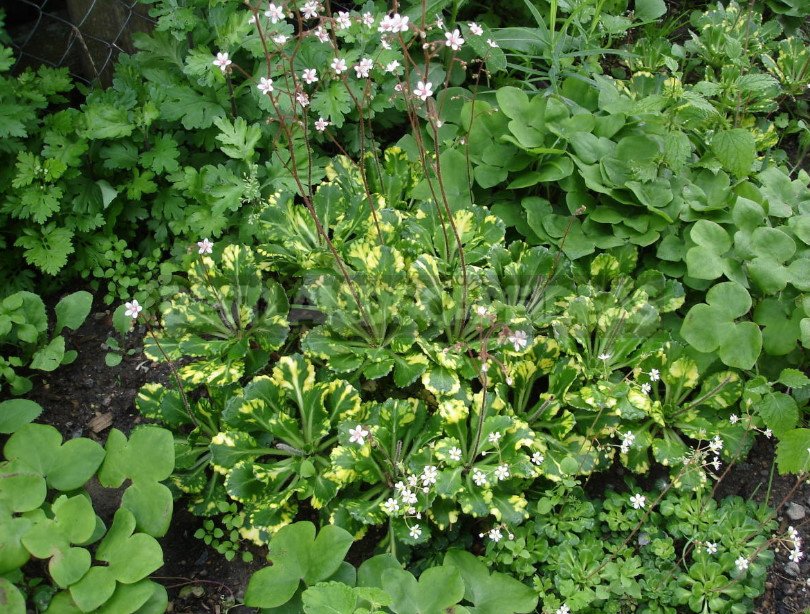
Plants varieties ‘Aureopunctata’ have green leaves, decorated with yellow spots, their sockets are not more than 10 cm in diameter. Pink flowers with a purple middle rise on high (up to 40 cm) peduncles. Flowering in may-June.
Saxifraga cortusifolia
Saxifraga cortusifolia has white flowers that bloom in September-October. Plant height 20-30 cm.
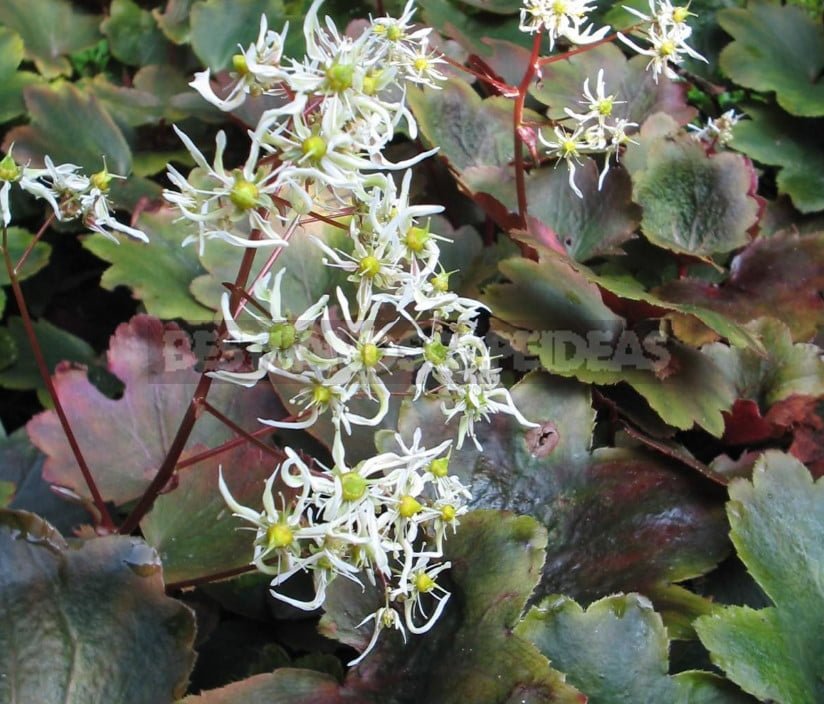
The cultivar ‘Rubrifolia’ is reminiscent of Heuchera for its attractive leaves and bright stalks. Leaf blade glossy and beautifully dissected, above olive-green, below crimson. In autumn, the plant is covered with delicate delicate openwork inflorescences consisting of white flowers on raspberry stems.
Saxifraga stolonifera
This view is quite unpretentious. It has rounded green leaves with radial light stripes. Leaf blades are covered with hairs.
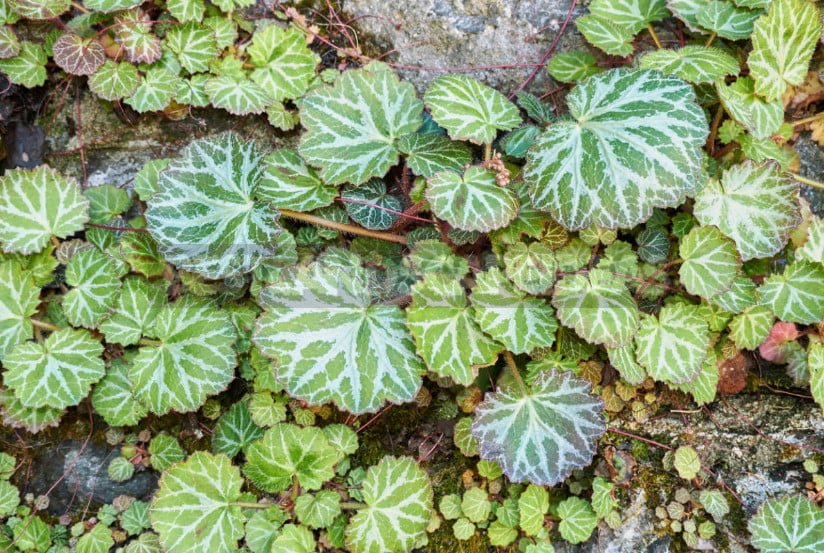
Forms a socket, from which depart numerous layering, forming at the ends of the young rosettes. The plant is usually placed in a hanging planters, from which the shoots are hung with rosettes at the ends.
Growing of saxifrage
It is impossible to give the same recommendations for the cultivation of all saxifrage. Diverse species require a wide variety of conditions. Saxifrage, which can now be found in the gardens of flower lovers-it is usually undemanding to the growing conditions, winter-hardy species. The main thing they need is a bright place and light, moderately fertile and moist drained soils. More demanding types of stonemasons may prefer shady places to protect tender leaves from sun burns.
Soil on the degree of fertility can also be different. For some, it is preferable to dry and rich in humus, for others-moderately fertile with an alkaline reaction.
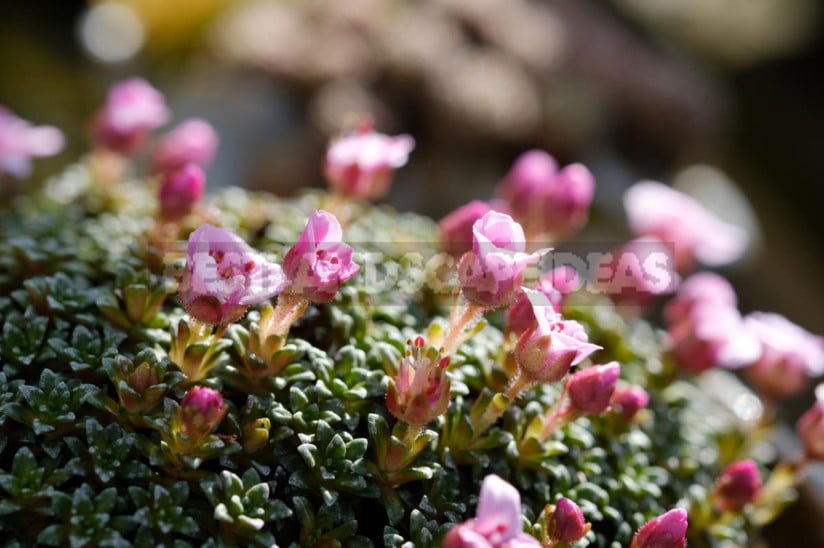
It is important to ensure that the soil around the plant is always moderately moist, but without stagnation of water. Also useful spraying (sprinkling) plants, as they like high humidity. Feed saxifrage enough twice a season with complex mineral fertilizers.
It should be known that these plants are very sensitive to getting on their pads of various plant residues. For example, if the leaves of the trees will fall to the saxifrages, they will rot.
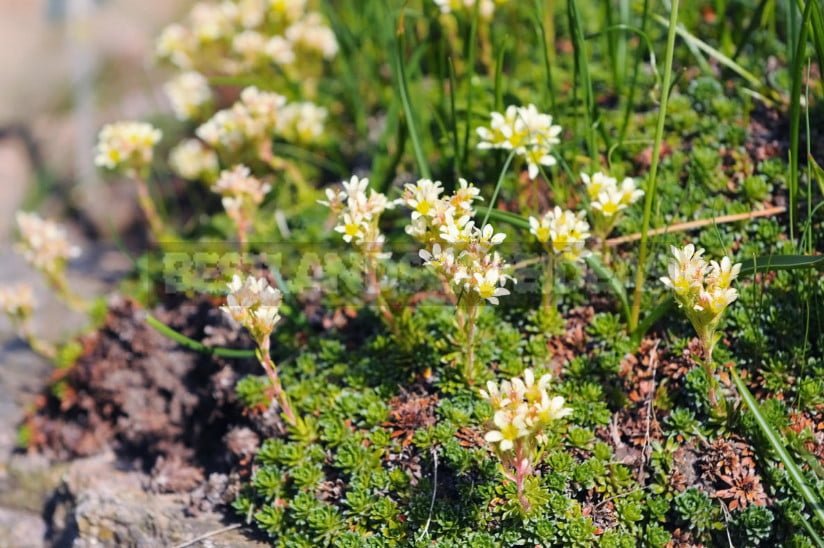
To retain moisture useful mulching light gravel. It also protects the plants from overheating, and root of the neck of saxifrage from becoming soaked. Species that require special conditions are grown by Amateur collectors.
Vegetative reproduction
Saxifrage easily propagated by dividing the Bush in August. The Bush is dug up and broken into several plots, which are planted in new places.
In June-July, some types of saxifrage, which form long side shoots, can be propagated by cuttings. Cut branches up to 10 cm long and planted them in loose peat-sand moist soil. During the summer, cuttings take root and form small independent rosettes, which are covered with a layer of leaves for the winter.
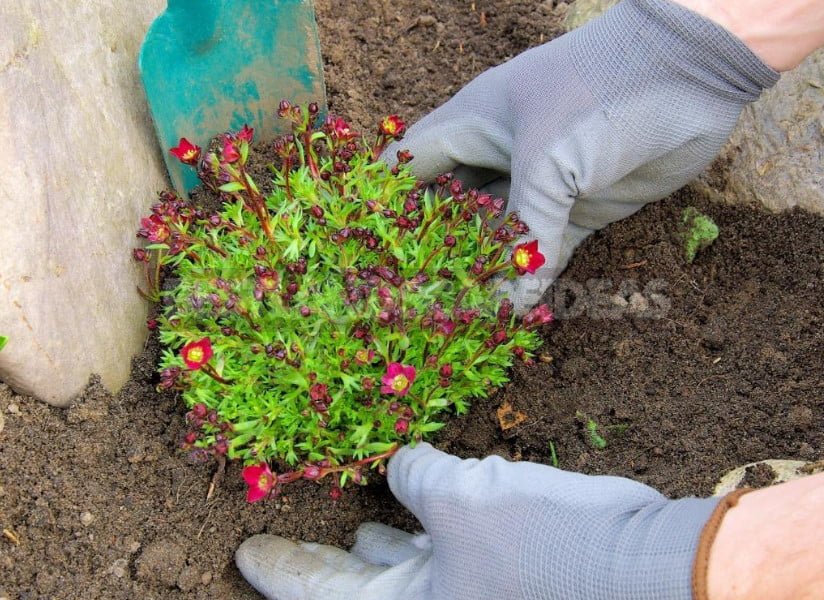
You can transplant plants into pots and put on the winter in the room. The next year they are planted in the garden, and they will bloom.
Themselves saxifrage propagated by rooting layering. Their creeping shoots in contact with the ground give roots and form new plants.
Reproduction by seeds
For reproduction use fresh (maximum three-year) seeds. Since most species need stratification, can be sown in the open ground in the winter or kept in the cold at home.
Seeds (very small) are placed superficially on the soil and lightly sprinkled with sand. The box is covered with a film and put in the refrigerator for 3 weeks. By the way, some rare species require a longer period of cold.
After stratification, the crops are taken out and placed in a bright place. After 1-2 weeks, germination begins. When 2-4 real leaves appear, the seedlings dive into separate cups.
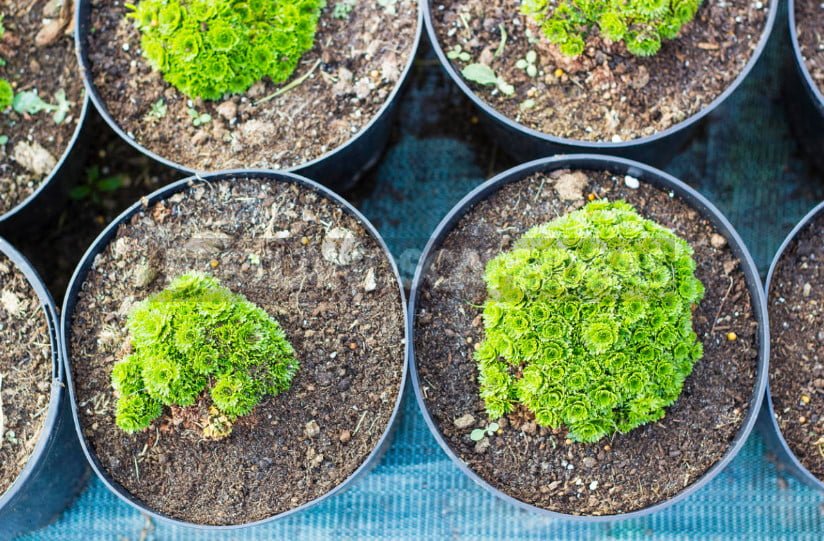
In may, seedlings are tempered by opening a window or taking out into the street. In early summer, grown plants can be planted in the ground. In the first year of saxifrage will gain vegetative mass, and bloom for the next season. Some species can only germinate after a year, so pots of ungrown seeds should be kept moist during this period until germination.
Saxifrage in the garden
Of course, the most suitable place for stone – breaking in the garden is rocky gardens, Alpine hills and rockeries. It is here, among the stones, they will feel at home.
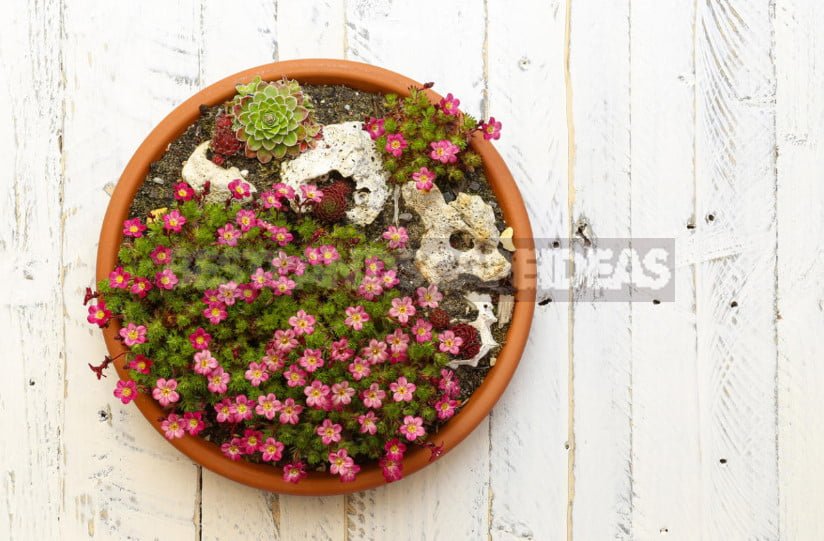
Saxifrage look very nice as separate pads on rocky backfill and retaining walls. Dear readers, do you grow saxifrage in your garden? Share in the comments how you grow these interesting plants.
